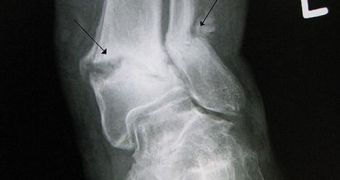In a recent series of experiments, experts from the Stanford University School of Medicine in Palo Alto, California, determined that protein injections might promote the healing of bones. The study, which was conducted on unsuspecting lab mice, showed that shots containing Wnt proteins promoted the speed with which the rodents' broken bones healed. The research team hopes to find a medical application for the discovery soon, Nature News reports.
Generally, this class of proteins plays an important role in the growth process of the human skeleton. What the team did was create tiny capsules (lipid bubbles or liposomes), which they then used to deliver the agents directly to the site of the injury. Stanford expert Roel Nusse, the leader of the investigation, says that the proteins trigger additional bone growth within just a few days. Details of the work appear in the April 28 issue of the esteemed publication Science Translational Medicine.
“It's a major technological advance, and the fact that Wnts promote bone regeneration is an important finding. They used a very clever way of delivering Wnts,” explains skeleton physiology expert Gerard Karsenty, who is based at the Columbia University, in Ithaca, New York. What these molecules are renowned for is the fact that they are very efficient at stimulating bone formation and tissue regeneration, but not for being good drugs. Like most other proteins, Wnts tend to clump together as well, which is why they can't really be expected to reach the site of the injury on their own.
Nusse and his team therefore looked for inspiration in cancer therapies, where drug delivery systems pack active agents separately, and then release them at the site of the tumors. The experts then realized that encapsulating the proteins inside liposomes is a good way of protecting them from their own instability, from the action of the immune system, and from clumping. Once at the injury site, the Wnt signal was maintained by inhibiting the Axin2 gene, which is known to dampen this particular protein. Once this happened, the molecules were free to do their job without obstacles.

 14 DAY TRIAL //
14 DAY TRIAL //